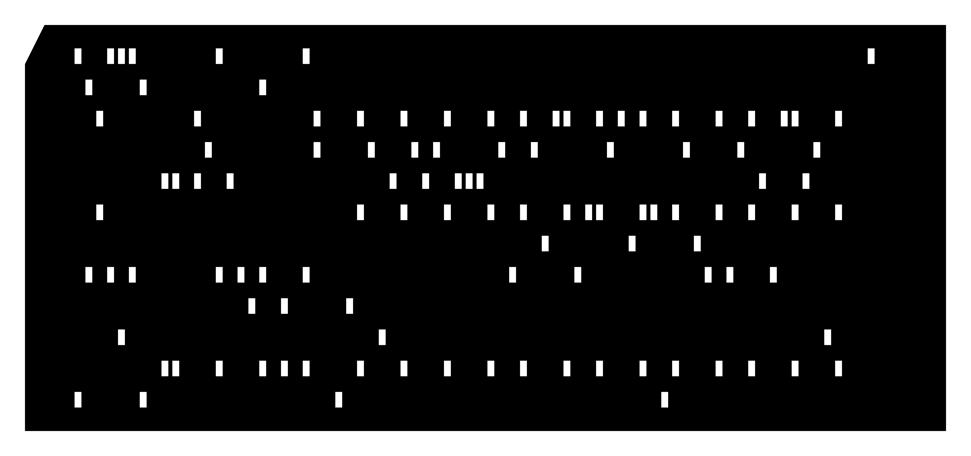FCSC - A hole, little holes...
Published on Sep 1, 2023 by Cartoone.
In this challenge, we are provided with punch cards from the IBM-029 machine. This punch card technique was used to store data in the distant past when mass storage had not yet seen the light of day:

after some research i came across the following web page:
http://laighside.com/punchcard.htm
but we’re missing the settings after some research on the IBM-029 drilling machine we end up finding a card format that corresponds to ours 80x12 we apply these settings and effectively decode our first card then I used this python script with basically the same settings to automatically decode all the other cards:
https://github.com/digitaltrails/punchedcardreader
once all the cards have been decoded, we get what amounts to a computer program we do a quick historical search and discover that 70 years ago, when the machine in question was released, two programming languages dominated the market: cobolte and fortran we also notice that in the program we’ve just decoded there are comments and that they all start with a ”!” based on this information, we can conclude that the language of the mysterious program is fortran.
the second part of the challenge, in addition to decoding, was to put the program back in order. it’s based on 4 loops, equivalent to our for loop, and uses the variable i as an index. we can therefore classify the instructions into two categories: those that use i in their syntax and the others. in the lines that don’t use i, you’ll find a number of set-up lines used to declare variables or to include a set of data, so at the top you’ll also see 3 instructions that will end the program - an equivalent of what would be a print("") in python, an instruction that would be the equivalent of return 0 in C, and finally an instruction that tells the compiler that the program is finished. Thanks to these deductions, we’ve reconstructed a good part of the program, leaving the body of the program to be rebuilt. I assumed that the loops were not nested, so I put the instructions in the following order, using abbreviations in the following section:
SSS = S1 SS = SSS SSS = S2 SSSS = SSS
we start by putting each of them in a loop, then we add the write instruction in the last one to display the result, then we execute the code which now looks like this:
! --------------------------------------------------
PROGRAM HELLO
USE HELLO_1
IMPLICIT NONE
901 FORMAT (99A)
INTEGER :: SSS(0:255)
CHARACTER :: SSSS(0:255)
INTEGER :: I
! - - - - - -
DO I = 0,29,1
SSS(I:I) = S1(SS(I+1)+1:SS(I+1)+1)
END DO
DO I = 0,29,1
SS(H(I+1)+1:H(I+1)+1) = SSS(I:I)
END DO
DO I = 0,29,1
SSS(I:I) = S2(SS(I+1)+1:SS(I+1)+1)
END DO
! - - - - - -
DO I = 0,29,1
SSSS(I:I) = CHAR(SSS(I:I))
WRITE (*,901,ADVANCE='NO') SSSS(I:I)
END DO
WRITE (*,901,ADVANCE='YES') ''
STOP 0
END PROGRAM
! --------------------------------------------------and it returns:
FCSC{#!F0RTR4N_1337_FOR3V3R!}
STOP 0